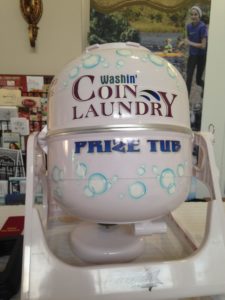Happy Valentine’s Day To You!
We all know it’s Valentine’s Day. Expressions of undying love, cards, and boxes of chocolate are the rule of the day. While reading this morning, I found this post about the history of chocolate written by Will Hobson, a staff writer for the Tampa Bay Times. I found it great reading – but then I love all things chocolate!
 “In 1502, Christopher Columbus landed at Guanaja, an island off the coast of Honduras. In his journal, he noted that natives drank a dark, frothy beverage resembling English beer. They offered him some. He found it bitter.
“In 1502, Christopher Columbus landed at Guanaja, an island off the coast of Honduras. In his journal, he noted that natives drank a dark, frothy beverage resembling English beer. They offered him some. He found it bitter.
This otherwise insignificant anecdote marked the first European encounter with chocolate. Made from a tree native to Central and South America, it was a libation for Mesoamerica’s elite thousands of years before it was the stuff of candy bars. Mayans and Aztecs drank it during religious ceremonies and buried it alongside fallen rulers. They traded cacao beans as currency.
When the beans crossed the Atlantic in the late 1500s, they were made into drinks that became the rage among Europe’s ruling class. A Swedish botanist classified the tree Theobroma Cacao as “food of the gods.”
Instead, chocolate would become a treat for the masses, consumed by soldiers on the battlefield and astronauts in space. And it built fortunes for those smart and innovative enough to see the potential in those dark beans.
But first, someone had to figure out how to transform that drink Columbus found bitter into the sweet confection we know today.
It wasn’t until the 1800s—relatively late in its 3,000-to-4,000-year history—that the making of hard chocolate confections was mastered. In 1828, Dutch chemist Coenraad Van Houten patented a process to make chocolate powder, making it possible to manufacture cheap chocolate treats. Two decades later, Joseph Fry sold the first chocolate bar, and then the Swiss had a series of breakthroughs.
In 1867, chemist Henri Nestlé discovered how to make powdered milk. A decade later, chocolate maker Daniel Peter used the powder to make milk chocolate. The same year, Rodolphe Lindt invented the conche, a device that stirred chocolate paste, eliminating the grainy, gritty quality chocolate sweets had until then.
While the Swiss were the first to make sweet, smooth chocolates that melted in your mouth, it was an American caramel maker who mastered mass production.
 In 1893, Milton Hershey visited Chicago for the World’s Columbian Exposition, where he saw something that changed his life: an exhibition of German chocolate-making machinery. Fascinated, Hershey bought the machinery and brought it back home to rural southeastern Pennsylvania. “He felt caramels were a fad, but the chocolate was the future,” said Pamela Whitenack, director of Hershey Community Archives.
In 1893, Milton Hershey visited Chicago for the World’s Columbian Exposition, where he saw something that changed his life: an exhibition of German chocolate-making machinery. Fascinated, Hershey bought the machinery and brought it back home to rural southeastern Pennsylvania. “He felt caramels were a fad, but the chocolate was the future,” said Pamela Whitenack, director of Hershey Community Archives.
He was right. Known as “the Henry Ford of chocolate makers,” Hershey (below) introduced innovations like conveyer belts and assembly lines to chocolate production. His 8,000 acres of dairy farms sent 60,000 gallons of fresh milk to his chocolate factory every day. For sugar, Hershey built a model town in Cuba—named, of course, Hershey—to support a sugar mill. (Like other American operations on the island nation, the mill stopped production in 1959.)
In 1923, Hershey got his first significant competition—from a Midwestern father and son named Frank and Forrest Mars, who debuted the Milky Way bar that year. The Mars men unveiled their Snickers bars in 1930, then the Three Musketeers in 1932.
While a successful business tandem, father and son Mars didn’t get along. So, in 1932 Frank gave Forrest $50,000, and the younger Mars set off for Europe with the foreign rights to Milky Way. The brilliant but mercurial son built a thriving company in England. While visiting Spain, he saw something that spurred one of his greatest inventions: soldiers in the Spanish Civil War eating, as rations, chocolate pellets coated in a hard candy shell that kept them from melting. When Forrest returned to America in 1939, he worked with R. Bruce Murrie, the son of a Hershey executive, to create a candy based on what he’d seen in Spain—the M&M. In 1981, astronauts aboard the space shuttle Columbia made M&Ms the first candy is eaten in space.
The average American today consumes about 11 pounds of chocolate annually. The Swiss lead the world in chocolate eating, consuming more than 24 pounds per person each year. In 2011, global chocolate sales topped $100 billion for the first time.”
I think I need to move to Switzerland so I can eat my fill of chocolate without the guilt trip!
Happy Valentine’s Day – Enjoy Your Box of Chocolates!
If you have any comments please post them below.
Ken Barrett

P.S You can find this and my other comments at KenBarrett.us



